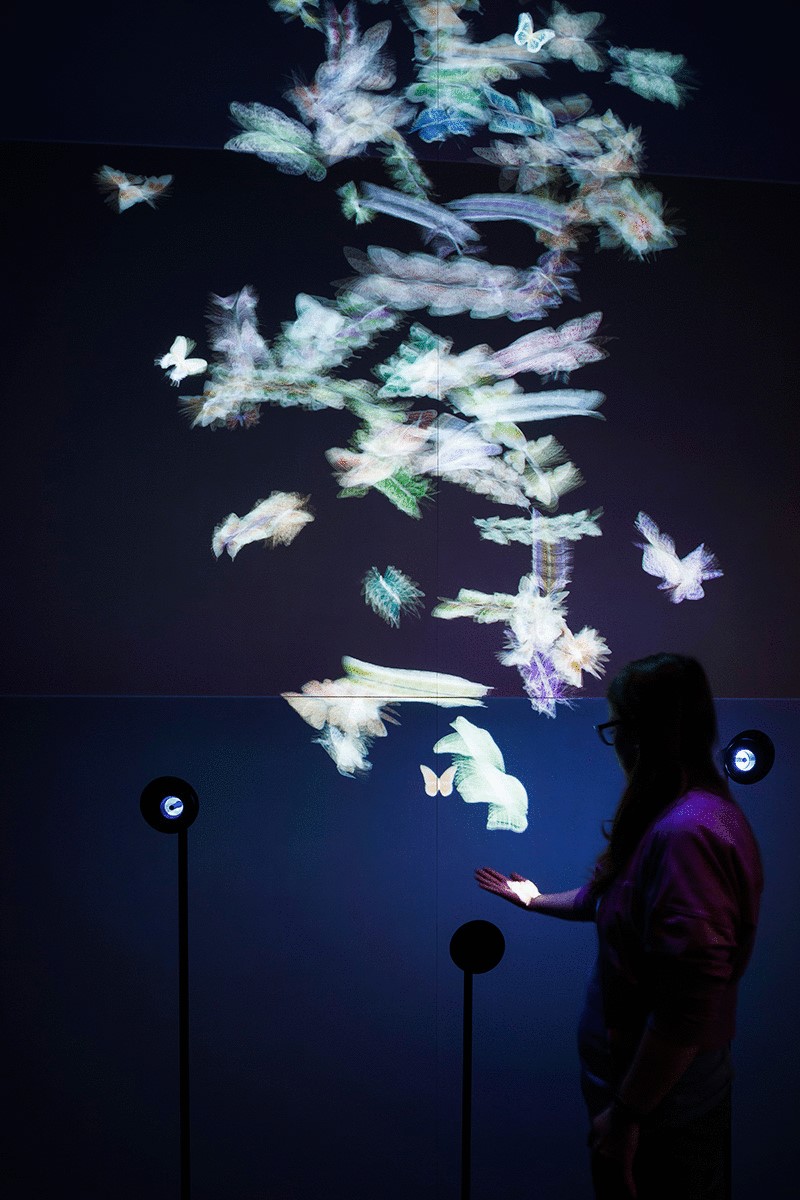

Volume 2
Published on February 2023Volume title: Proceedings of the 3rd International Conference on Educational Innovation and Philosophical Inquiries (ICEIPI 2022), Part III

The paper analyzes the difference of simple past tense between Standard Swahili and English. Including time definition; sentence structures and word change; and environments when simple past tenses are used. Evidences and materials are collected from different sources, mainly focusing on published books and Swahili people’s usage. This essay compares two languages which provides a vertical view of the languages, improving Swahili grammar study.

 View pdf
View pdf


The Tang empire marked the peak of imperial China as it was one of the greatest superpowers in the world of its time. The Daming Palace that represented the empire’s authority and strength was also of glory. It was an unprecedentedly magnificent compound built to demonstrate the supremacy of the vast empire to all its people and visitors. Despite the empire’s mightiness, rising warlords and corrupt bureaucrats destroyed it from within as well as the Daming Palace. After the downfall of Tang, China experienced a long period of chaos and another Han-ruled empire was only to be seen five contraries later. The Ming empire reorganized regimes in China and the Forbidden City in Beijing, which still exists today, demonstrates in silence the changes of Chinese society. From the changes in symbolism significance and more deliberate distinction of the royalty’s privilege, as the one chosen by god, from others in the empire, we can connect the social changes with the surfacing changes of buildings. For example, the Ming government had more control at local levels so that they could collect more taxes and nip any potential threat to the central government in the bud. The government also conducted an embargo in coastal areas to protect them from foreign invaders. To eliminate all threats to the throne, the empire set up a secret police force that supervised the society from nobilities to peasants. All these policies lead to a stricter social stratification that was visible through the changes in architecture. The changes in politics and economic aspects such as taxation lead us to one conclusion, which is the strengthening of the centralization of power and an extension of governance to lower levels. And this study is planned to unveil the connections between the changes in architectural and social developments.

 View pdf
View pdf


The literati and officialdom in the Northern Song Dynasty developed a political consciousness and demands that had not existed among their predecessors. They established political identities and cultivated a strong sense of political subjectivity. This paper mainly examines how the literati and officialdom politics developed and evolved in the Northern Song Dynasty. Using the research method of literature reviews, the paper focuses on the following questions: how the emperors of the early Northern Song Dynasty designed and constructed governing structures, how these structures affected the literati and bureaucratic system, and how literati and officialdom politics developed based on their acceptance and rejection of these ideas. The Northern Song literati showed their unique cultural profile as they ruled together with the emperor and, as a result, created a peculiar literati bureaucratic politics. The Northern Song literati bureaucrats evolved and strengthened their subjectivity both through the political status they acquired and through their political participation.

 View pdf
View pdf


Sula vividly recreates the life of black people at the bottom, reflecting their survival dilemmas and their struggles. Because the growth experience of Sula and Nel is the main line of the story and the wonderful spatial description interspersed with it is ignored, this paper is based on bell hooks' theory, analyzing the subjective transformation and the idea of speaking for black people reflected in the spatial description. Through analysis, it can be found that the novel's spatial depiction visualizes abstract concepts, both physical space with boundaries and natural and social space without boundaries, showing the anti-white supremacy and the transformation of the narrative subject from the side. There are many metaphors in the spatial depiction of the article. Analyzing the metaphors in black literature combined with spatial depiction may provide reference for more minority literary writing and direct public attention to the plight faced by minorities.

 View pdf
View pdf


As a result of the rise of neo-Aristotelianism in recent times, the discussion of 'virtue' has led to the question of whether virtue ethics can exist as a sound system. Prior to this, there was no normative standard for 'virtue', deontology ignored human nature, and utilitarianism focused more on instrumental reason, ignoring the plurality of the 'good'. Anscombe defined 'virtue ethics' in his Modern Moral Philosophy, and Nussbaum built on this by arguing that goodness does not depend only on the rationality of the actor, but also on morality and institutions, and Hesterhaus provided a normative interpretation of virtue ethics from an Aristotelian standpoint. However, as virtue ethics defines and regulates virtue ethics, it is difficult to form a logically coherent system, as either virtue ethics is more or less connected to other ethics, and there are even contradictions between specific claims.

 View pdf
View pdf


The Second Sino-Japanese War (1937–1945) was also a page in the development of the Chinese nation that was marked by vicissitudes. During this period, the national spirit, with patriotism as its core, reached an unprecedented height. The Sino-Japanese War lasted fourteen years, divided into the stage of a partial war and a full-scale war. This article focuses on the comprehensive strategic defence phase during the full-scale war from 1937 to 1939, with the Battle of Shanghai as the main focus, and discusses the analysis of the history of the war and the national spirit embodied in it. The significance of the Battle of Shanghai is not only the military strategic consideration of "uploading and transmitting" or buying time for the national industry to move inward, but also the "united mindset" and even "bottom-up" spirit, from officers to popular people. The national spirit of "bottom up" embodied in it provided valuable and rich ideological and psychological reserves for people to resist the war for a long time. The Battle of Shanghai promoted the unity and solidarity of people from all social classes in Shanghai and even the whole country under the call of "resisting Japan and defeating insults, solidarity in the national defense", and promoted the development of an unprecedented new climax of the national anti-Japanese movement.

 View pdf
View pdf


This paper aims to trace the legacy of the Gracchi brothers and the effect of their reform throughout the republican era, specifically over how it foreshadows the collapse of the Republic. Although the reform implemented by the Gracchus brothers failed, it is still of great historical importance because it reveals the corrupted nature of Roman republic while taking the socioeconomic background into consideration to predict the downfall Rome. The downfall of the Gracchi brothers was primarily resulted from the majority of the senators whose interests were against the reform measures because the benefits for the majority were built on the lost of the senators. As a result, the Senate refused to accept changes of any sort and rejected an opening advancement proposed to improve the welfare of the People, leading to the tragedy of the death of Gracchi brothers.

 View pdf
View pdf



Cindy Sherman, a female post-modern artists, experiments with multiple identities in her artworks to disclose issues related to gender power structures, such as male gaze, voyeurism, and flawed aesthetic pursuits forced by males, and to promote positive female images, scraping off stereotypes of women being emotional, brainless, and dependent. Though she alludes to twentieth-century Holleywood B movies, fashion posters, and fairy tales, the humor and sarcasm used in her work and the groundbreaking feminism ideas altogether leads Cindy Sherman’s portrait photographs beyond a superfacial use of pastiche, a technique of “blank mimicry” that Fredric Jameson believes most postmodernists employ. Cindy Sherman achieves a complication in her topics through choices of props and settings, wearing makeups, and employing gestures.

 View pdf
View pdf


The Shiji史記(Records of the historian)written by Sima Qian司馬遷is the first of the so-called “official histories”. Professor Liang Qichao梁啟超 once said, "Before Sima Qian, there was no such thing as historiography." This view is debatable, but it is a good indication of the status of the Shiji. In particular, Sima Qian changed the "chronological" compilation method of the pre-Qin先秦 period and adopted the " biographical style", which was followed by the "official history". However, there is still no definite conclusion as to whether the style of the Shiji was first created by Sima Qian or was inherited from his predecessors. In view of this, based on the previous studies, this paper intends to explore the creation of the style of Shiji and discuss Sima Qian's view of history, his historical knowledge, and the historical significance of Shiji on the basis of "the way of heaven" and "human affairs”.

 View pdf
View pdf



In the new media era, technological changes are constantly being implemented and narrative forms are changing. The narrative experience with interaction as the core arises at the historic moment. In the process of creating new media works of art, it has become a trend for viewers and authors to communicate collectively in order to achieve common creation. In view of this, the purpose of this paper is to explore the development trend of new media art, combined with narrative theory, to construct the logical relationship of the article's internal structure from the three aspects of interactive narrative relationship, the driving consciousness of emotional expression and the "immersion" expression of the work, and to explore the impact of interactive narrative on the viewer's personal emotion and the emotional connection between the viewer and others and the society with the viewer's emotion as the center. The article draws a conclusion that the interactive narrative mode can satisfy the common creative relationship between the viewer and the art, and the emotional expression, as a way of communication and information transmission between the work and the viewer, can provide a certain thinking and creative space for the future development direction of new media image art.

 View pdf
View pdf




